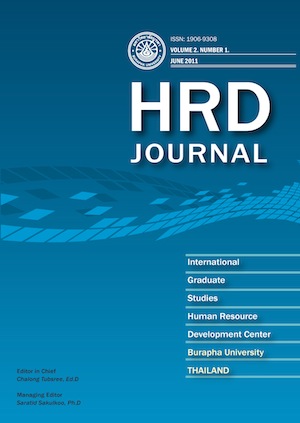Corporate Culture of a Multinational Company Operating in Thailand: A Grounded Theory Approach
Keywords:
Corporate Culture, Core Values, Cross Culture Management, Grounded TheoryAbstract
This study used a grounded theory approach to study the corporate values of a multinational company operating in Thailand. Its purpose was to discover the “Core Values” of the corporate culture that are held by members of the selected stakeholder groups. The setting involved purposive sampling and theoretical sampling that was used to identify 25 participants who were working at the selected multinational company. Data were collected from in-depth, semi-structured interviews of the participants. Based on a content analysis of the interview transcripts, the findings were presented in a model indentifying seventeen characteristics of corporate culture.This model was proposed as a tentative explanation of the findings at this stage of the research. There are six components of the model: (1) Corporate Direction Force, (2) Adapting at All Time, (3) Team Player, (4) Brother & Sister Working Culture, (5) Business Ethics, and (6) Business Target. This study made a significant contribution to our knowledge of the importance of corporate values to multinational organizations, policy maker, and local countries, especially for the management which uses corporate culture values to support its business strategies, the appropriate management style that contributes to the work atmosphere, the nature of culture, the kinds of people brought in at the entry level, the criteria used to determine successful performance and advancement, and the appropriate types of interpersonal relationships that establish the workplace climate.
Keywords : Corporate Culture, Core Values, Cross Culture Management, Grounded Theory
Downloads
How to Cite
Issue
Section
License
Copyright@HRD Journal, Burapha University






